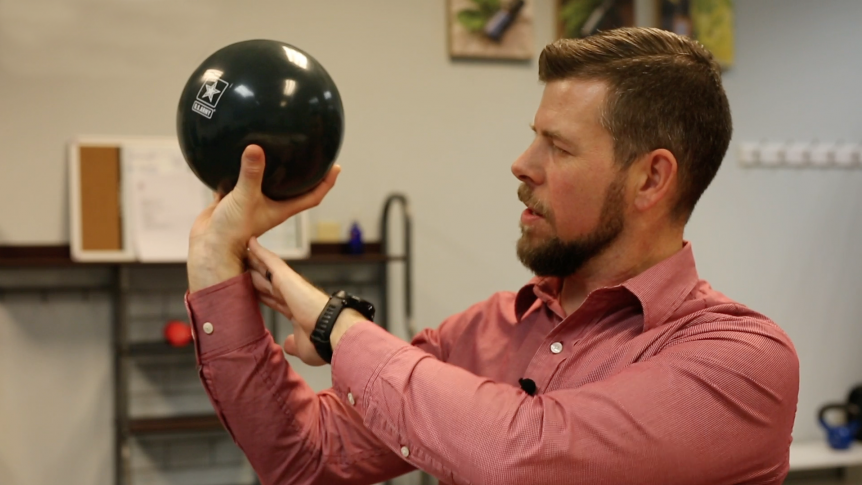When asked why people often come to the Spine and Scoliosis Clinic for help, Cory explains why fatigue is the most popular culprit. Our posture, particularly how we hold our head, can fatigue muscles and impact our overall spinal health. In this video, Cory demonstrates this using a 10lb bowling ball, and shows how our natural day-to-day tendencies can influence poor posture and create compounding fatigue.
Transcipt:
“A lot of people who come in our office, I say a good majority of people that come to our office, their primary symptom is fatigue, low energy. So that’s primarily what we see in our office. It’s primarily what we help with. And just an explanation on where low energy and fatigue can come from is based on a structure standpoint.”
“So if you think about structure, I’ve got this nice little bowling ball here. So if you can see. 10 pounder. The human head, on average, weighs between 10 and 14 pounds. So this is on a very low end of how much a head weighs. So this really exaggerates how much energy it takes to hold up your head. So if we start thinking about posture. So I got this little bowling ball here. And over my center of gravity, I can balance this bowling ball up and down pretty good. You also notice there, I’ve got this nice curve. So this curve represents what our neck looks like or should look like in our spine. This is what it should look like. It should be a nice shock absorber just like this.”
“So if you think about fatigue on an energy standpoint, if I was say to take this bowling ball, and instead of having that nice perfect neck curve, I’m just gonna go ahead and straighten that out so I have a straight neck curve. My shoulder’s already starting to get tired holding onto this ball. Now if you take a little bit step further, and let’s go ahead and put a reversal in there. See how long you can hold onto that ball. There it goes. So not very long. I mean, so if you think about it, this is only 10 pounds. And this is only maybe movement of an inch.”
“A lot of people when we see their postures, when we take a picture of them from the side, a lot of times it’ll look like it lines up because most people, everything we do in our daily life is forward. So we’re always doing everything forward. Our shoulders like to round forward which makes us look like we have good posture. But the first thing we want to do is round those shoulders back and my head didn’t move. But my shoulders did. So now you can start to see how far the head is forward. So when we start thinking even on millimeters, millimeters, just millimeters forward, the thousand pounds of pressure that we’re putting on our spine, it’s a lot of pressure, which causes a lot of muscle fatigue. So this, the little muscles in the back of it, in the back of the wrist. And then going into the back of the spine, the suboccipital muscles, those are really small muscles that aren’t very strong. And so when we start letting our head out like this, they just have a really hard time holding onto that. And so just really, really get fatigued very, very quickly holding onto this head.”
“The other thing to think about is keeping your head over your shoulders, this ball here doesn’t weigh anything. I could hold this ball all day long just like this. It doesn’t change. Everything’s good. But start to push that ball out and see how far out you can hold that and how long you can hold onto that ball. Already starting to get fatigued. It’s really heavy really, really quickly. So thinking on a low energy and fatigue standpoint, thinking about how far your head is forward and how much the muscles in the back of the head have to work.”

